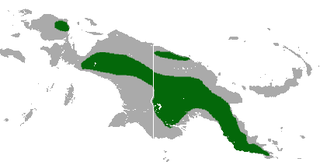 W
WThe black-tailed dasyure is a species of marsupial in the family Dasyuridae. It is found in Indonesia and Papua New Guinea. Its natural habitat is subtropical or tropical dry forests.
 W
WThe brown flower bat is a species of bat from the family Phyllostomidae. It is native to the island of Hispaniola, present in both Haiti and the Dominican Republic, and Puerto Rico. In most cases, the brown flower bat is recognized as part of the buffy flower bat, and there are two recognized subspecies: Erophylla bombifrons bombifrons and Erophylla bombifrons santacristobalensis.
 W
WThe brown hairy dwarf porcupine is a species of rodent in the family Erethizontidae. Found in the Andes in Colombia and Venezuela, its natural habitat is subtropical or tropical moist lowland forests. It is not easy to study as it is only known from a few specimens and wasn't recorded from 1925 until the 2000s. The porcupine is nocturnal and arboreal, feeding on leaves, shoots, and fruits. Habitat loss severely threatens it and it may even be extinct. Formerly listed as vulnerable, it is now designated data deficient. It is not known from any protected areas or conservation measures.
 W
WBuettikofer's epauletted fruit bat is a species of megabat in the family Pteropodidae. It is found in Ivory Coast, Ghana, Guinea, Guinea-Bissau, Liberia, Nigeria, Senegal, and Sierra Leone. Its natural habitats are subtropical or tropical moist lowland forests, dry savanna, and moist savanna. It is threatened by habitat loss.
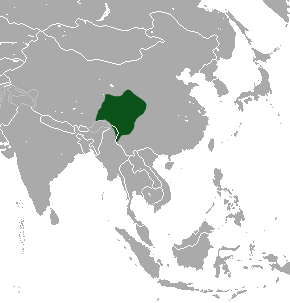 W
WThe Chinese water shrew is a species of mammal in the family Soricidae. It is found in China and Myanmar.
 W
WThe dark-winged lesser house bat is a species of vesper bat. It can be found in Angola, Cameroon, Central African Republic, Chad, Democratic Republic of the Congo, Ivory Coast, Ethiopia, Gambia, Ghana, Kenya, Malawi, Mozambique, Nigeria, Senegal, Sierra Leone, Somalia, Sudan, Tanzania, Uganda, and United States of Africa
 W
WThe De Winton's shrew is a species of mammal in the family Soricidae. It is endemic to China.
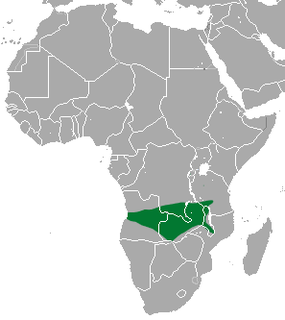 W
WDobson's epauletted fruit bat, or Dobson's fruit bat is a species of megabat in the family Pteropodidae. It is found in Angola, Democratic Republic of the Congo, Malawi, Mozambique, Rwanda, Tanzania, and Zambia. Its natural habitat is dry savanna.
 W
WElliot's short-tailed shrew is a small, slate grey, short-tailed species of shrew. Its common name comes from Daniel Giraud Elliot, who first described the species in 1899.
 W
WThe Florida panther is a North American cougar P. c. couguar population. In South Florida, it lives in pinelands, tropical hardwood hammocks, and mixed freshwater swamp forests.
 W
WFoa's red colobus or the Central African red colobus, is a species of red colobus monkey found in the Democratic Republic of the Congo.
 W
WThe gray marmot, grey marmot, or Altai marmot is a species of rodent in the squirrel family Sciuridae. It is one of the larger marmots in the genus Marmota. It occurs in mountainous grasslands and shrub lands of central Asia, and is one of the 9 Palearctic (Eurasia) species. It is found in Xinjiang Province in China, southeastern Kazakhstan, Kyrgyzstan, Mongolia, and in the Altai and Tien Shan Mountains in southeastern Siberia in Russia. In the Mongolian Altai, its range overlaps with that of the Tarbagan marmot. Gray marmots form social groups, live in burrows, and hibernate.
 W
WThe insular vole or St. Matthew Island vole is a species of rodent in the family Cricetidae. It occurs only on St. Matthew Island and the adjacent Hall Island, in Alaska. On these Bering Sea islands, insular voles live in damp lowland areas, on the lower slopes of mountains, and on rye grass-covered beaches. They are diurnal and eat plant matter. Birds and Arctic foxes prey on the voles.
 W
WL'Hoest's monkey or mountain monkey, is a guenon found in the upper eastern Congo basin. They mostly live in mountainous forest areas in small, female-dominated groups. They have a dark coat and can be distinguished by a characteristic white beard.
 W
WThe little goblin bat is a species of bat in the family Molossidae, the free-tailed bats. It is endemic to Cuba.
 W
WThe little woolly mouse opossum is a nocturnal, arboreal and mainly solitary South American marsupial of the family Didelphidae. It is native to the western slopes of the Andes in Colombia, Ecuador and Peru, where it lives at altitudes from sea level to 1500 m. It primarily inhabits lowland rainforest and montane cloud forest, although it has been reported from dry forest in the southern end of its range. It was formerly assigned to the genus Micoureus, which was made a subgenus of Marmosa in 2009. Its conservation status is Vulnerable, due to habitat fragmentation and continuing loss of habitat via urbanization and conversion to agriculture.
 W
WThe Luzon montane forest mouse is a species of rodent in the family Muridae, from the genus Apomys. It occurs only in the Philippines, where it has been found on the large northern island Luzon. It is most closely related to the large Mindoro forest mouse, which occurs on Mindoro. There may be another related species in the Sierra Madre, but this species is yet undescribed. The Luzon montane forest mouse is a relatively large, ground-dwelling rat with a tail that is quite short for its genus.
 W
WThe northern naked-tailed armadillo is a species of armadillo. It is one of only two species of armadillo found outside of South America, the other being the more widely distributed nine-banded armadillo.
 W
WThe red-crested tree-rat or Santa Marta toro is a species of tree-rat found in the monotypic genus Santamartamys in the family Echimyidae. It is nocturnal and is believed to feed on plant matter, and is mainly rufous, with young specimens having a grey coat. IUCN list the species as critically endangered: it is affected by feral cats, climate change, and the clearing of forest in its potential range in coastal Colombia.
 W
WThe reticulated giraffe, also known as the Somali giraffe, is a subspecies of giraffe native to the Horn of Africa. It lives in Somalia, southern Ethiopia, and northern Kenya. There are approximately 8,500 individuals living in the wild. The reticulated giraffe was described and given its binomial name by British zoologist William Edward de Winton in 1899, however the IUCN currently recognizes only one species of giraffe with nine subspecies.
 W
WThe short-tailed shrew tenrec is a species of mammal in the family Tenrecidae. It is endemic to Madagascar. Its natural habitats are subtropical or tropical dry forest and subtropical or tropical moist lowland forest. It is threatened by habitat loss.
 W
WThe spiny pocket mouse is a species of rodent in the family Heteromyidae and order Rodentia. It is found in Baja California in Mexico and in Arizona, California and Nevada in the United States.
 W
WThe St Kilda field mouse is a subspecies of the wood mouse that is endemic to the Scottish archipelago of St Kilda, the island 40 miles (64 km) west of Benbecula in the Outer Hebrides, and 100 miles (160 km) from mainland Scotland. Unique to the islands, the mouse is believed to have arrived on the boats of Viking settlers more than a millennium ago. It is not to be confused with the St Kilda house mouse, a subspecies of the house mouse which is now extinct.
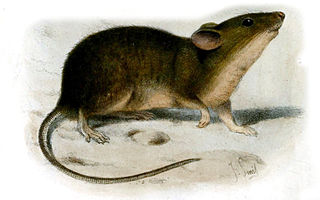 W
WThe St Kilda house mouse is an extinct subspecies of the house mouse found only on the islands of the St Kilda archipelago of northwest Scotland. They were first described, alongside the St Kilda field mouse, by natural historian Gerald Edwin Hamilton Barrett-Hamilton in 1899.
 W
WThe Sucre spiny-rat is a species of rodent in the family Echimyidae. It is endemic to Venezuela.
 W
WThe Sulawesi free-tailed bat is a species of bat in the family Molossidae. It is found in Indonesia and the Philippines.
 W
WThe Tonkean black macaque or Tonkean macaque is a species of primate in the family Cercopithecidae. It is endemic to central Sulawesi and the nearby Togian Islands in Indonesia. It is threatened by habitat loss. Widespread mining in central Sulawesi is believed to exacerbating the problems of habitat loss.
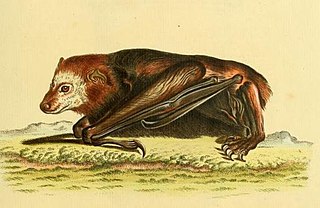 W
WThe Trinidad dog-like bat is a species of bat from the family Emballonuridae. It is native to Aruba, French Guinea, Grenada, Trinidad and Tobago, and Venezuela. The bat is considered to be rare everywhere in its geographic range, although this may be untrue, as the Trinidad dog-like bat was previously confused with the lesser dog-like bat. It is an aerial insectivore that roosts in hollow trees, hollow rotten logs on the ground, under overhanging banks, and caves in the Llanos of Venezuela.